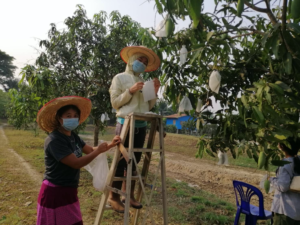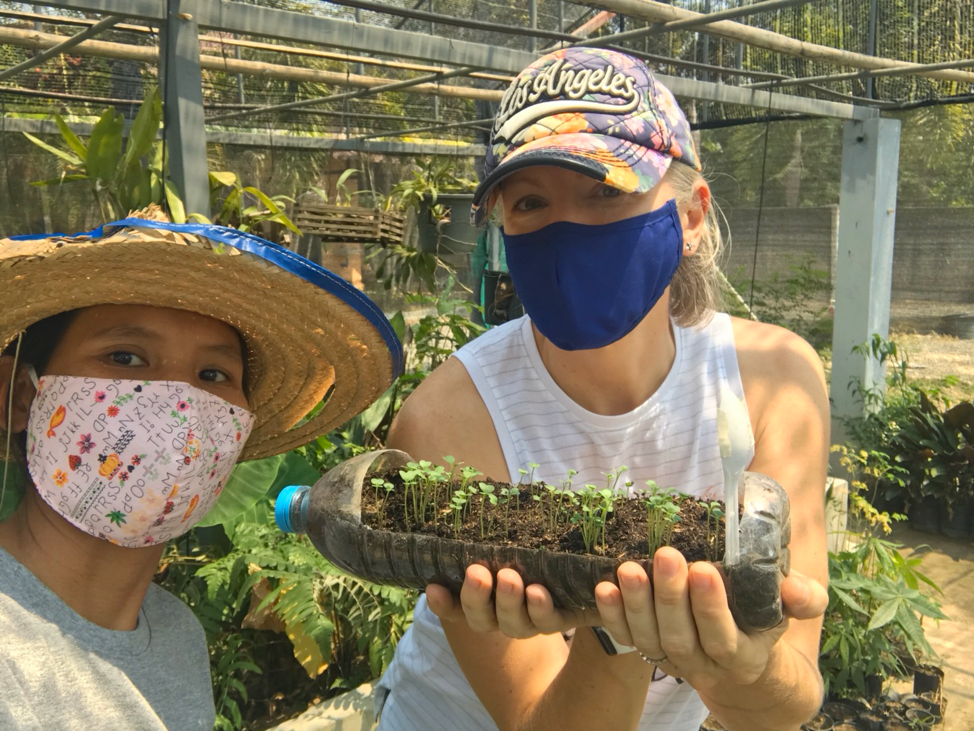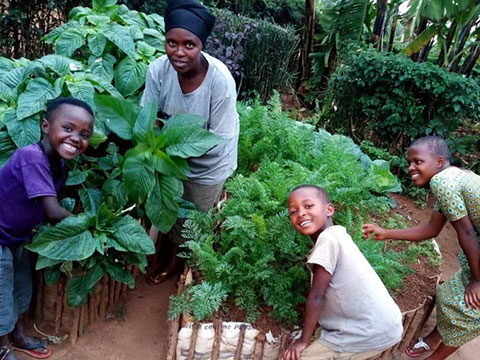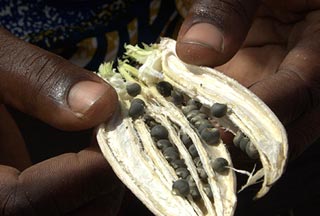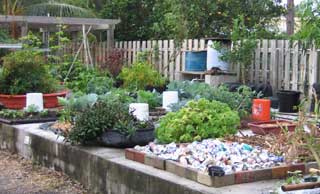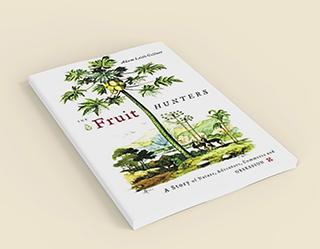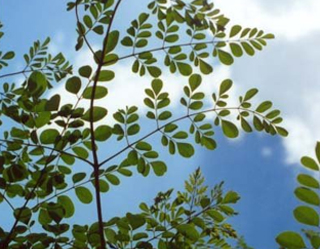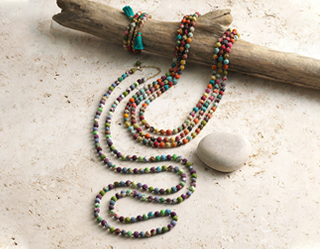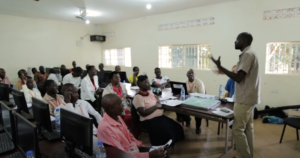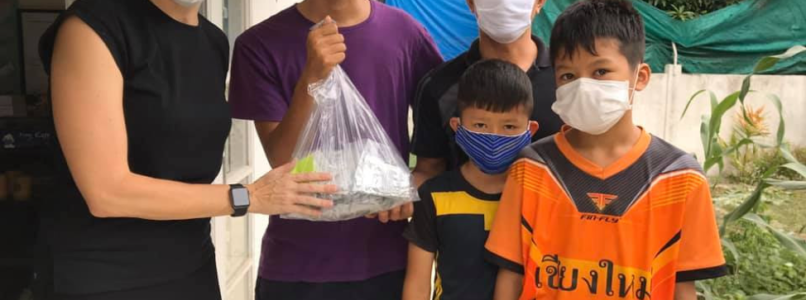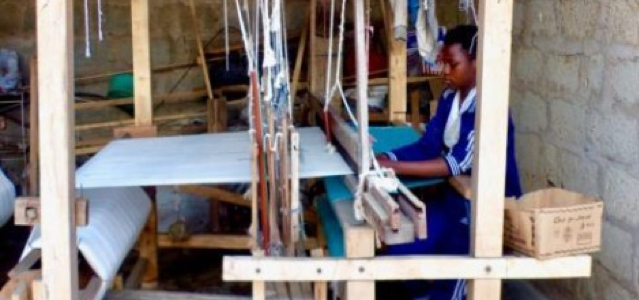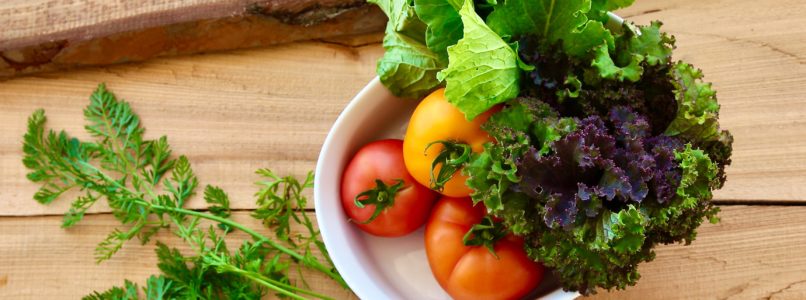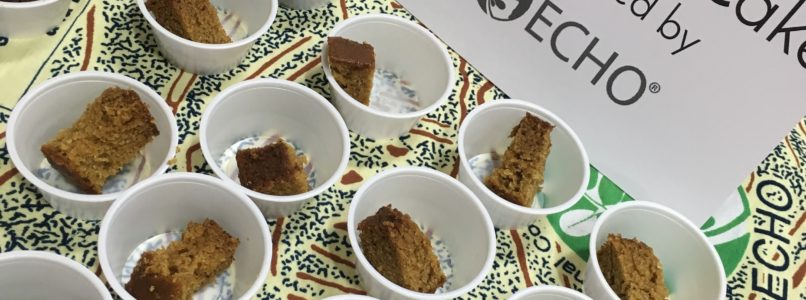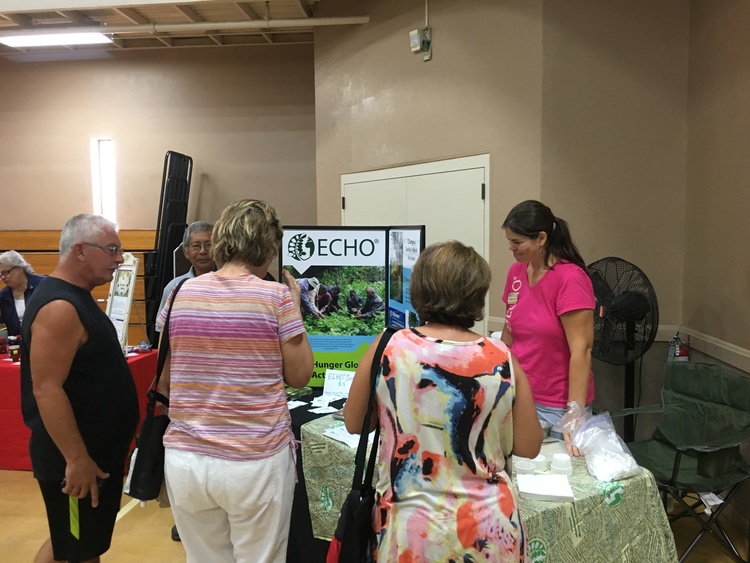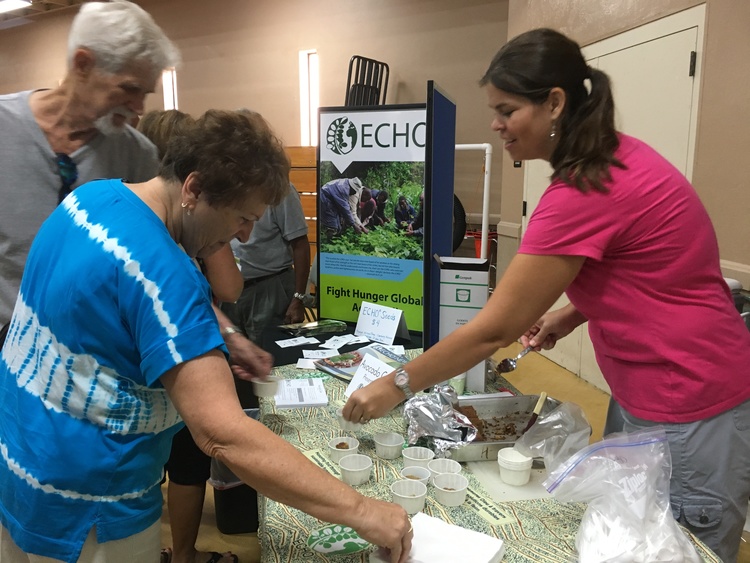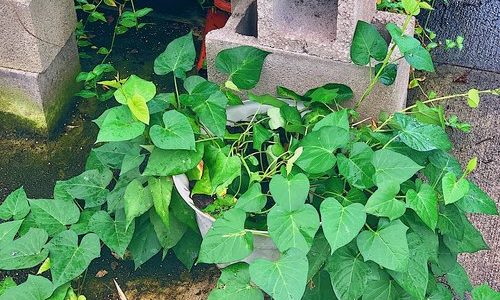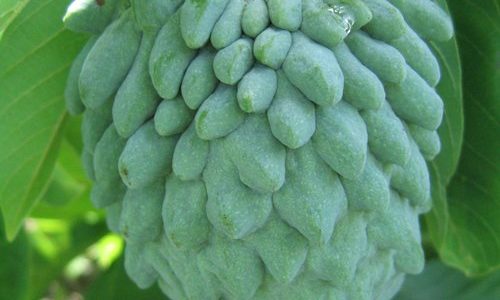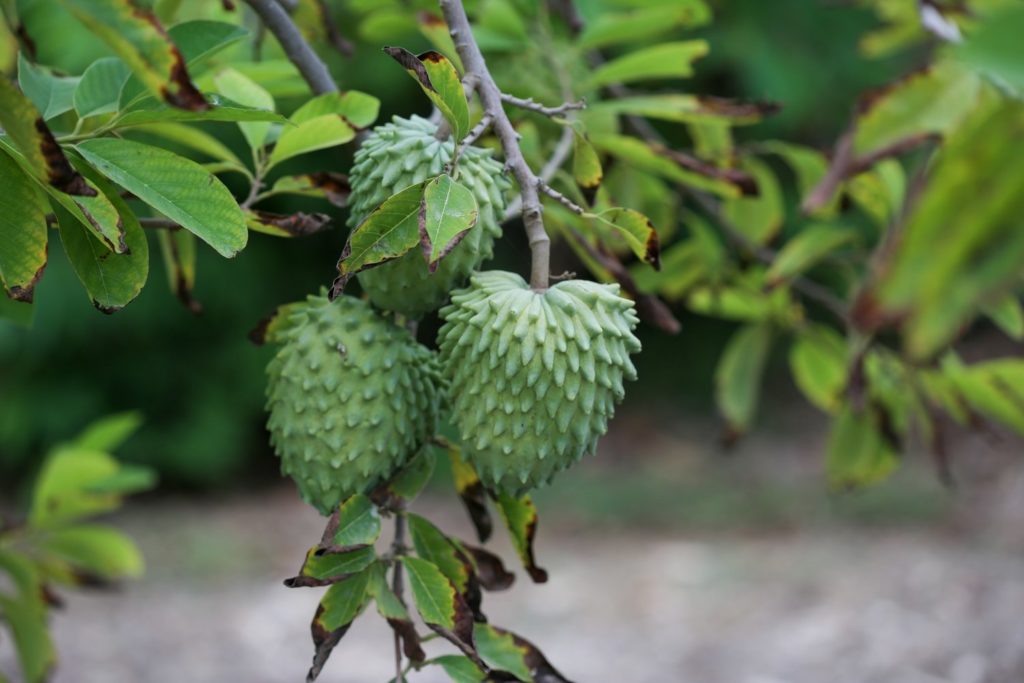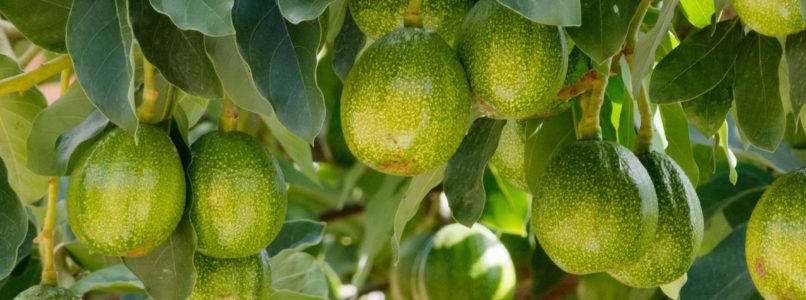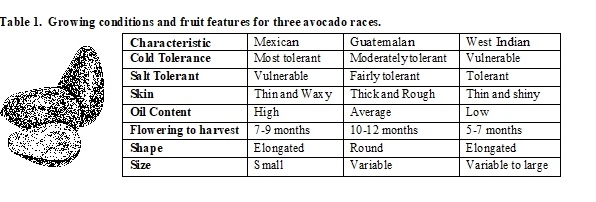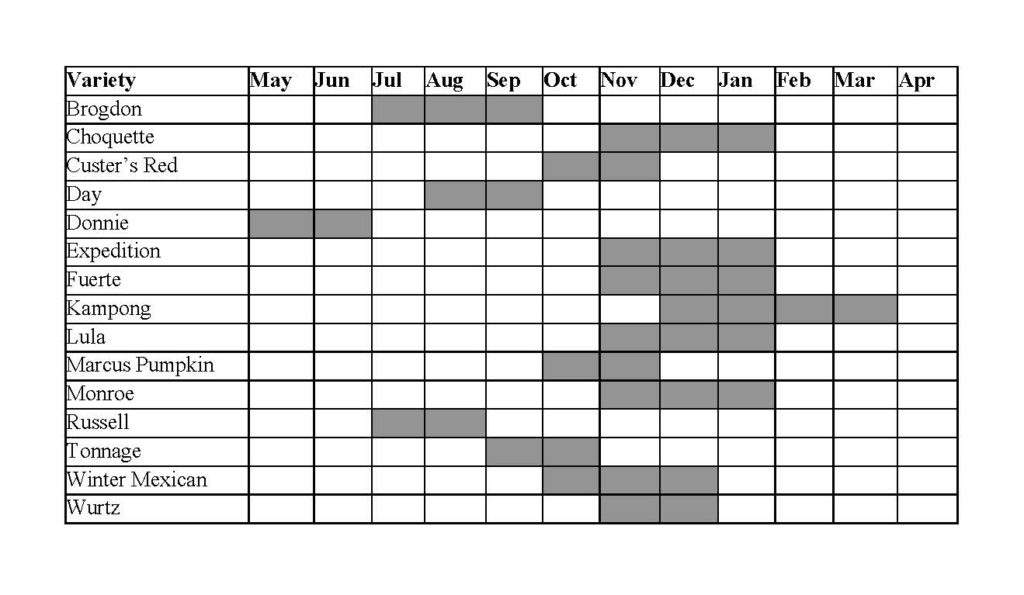‘Brogdon’ (A and B type), a M x WI cross, is productive and hardy to 22º F. It is the most cold-hardy variety we commonly stock in our nursery. It bears small, smooth, black-skinned fruits (8-14 oz.) with high quality green flesh. For Floridians looking for a ‘California’ or Mexican type similar to ones found in the grocery store, Brogdon is a good choice. Its strength is its cold hardiness and excellent, rich flavor. Drawbacks include a large seed and paper thin skin that makes fruit difficult to peel. (It is so easy to scoop the soft flesh from the half-shell—does anyone really peel an avocado?) Brogdon ripens July-Sept.
‘Choquette’ (A type), a G x WI cross, is oval-shaped and large (24-40 oz.). Skin is glossy, smooth, and slightly leathery. The smooth flesh is of an excellent quality with 13% oil and a mild nutty flavor. Choquette is similar to Monroe in fruit size and quality; both are excellent choices for those interested in a very good- tasting, large ‘Florida pear’ shape. The Choquette has an open, spreading growth habit. Freeze damage in established trees occurs around 26º F. Season is Nov-Jan. with heavy bearing in alternate years.
‘Day’ (A type) is a G x WI cross. Fruit is small (8-16 oz.), pear-shaped with an excellent rich, nutty taste. Skin is green and dull. The tree is very productive and cold hardy; Dr. Price’s tree in North Ft. Myers, FL survived the terrible freeze in 1989 with little damage while a nearby avocado was killed. Bears Aug-Sept.
‘Donnie’ (A type), a WI type, is cold sensitive. It is the earliest commercial variety (May – June) and bears large fruit (greater than 1 lb). They are extremely mild, to the point of being bland. Its popularity is due to its early season.
‘Expedition’ (Unknown flower type) likely has Guatemalan heritage. The round fruit is medium to large (bigger than Lula), with dull, dark green skin and contains a large seed. David Fairchild selected this high quality cultivar but much remains unknown about it. The ‘Expedition’ in our arboretum sustained only minor damage during the January freeze of 2009, which severely damaged many West Indian cultivars. Expedition bears Nov-Jan., but the fruit can hang on the tree through February.
‘Fuerte’ (B type) is a M x G cross commercially grown in many regions of the world. The fruit is small (12-14 oz.) with dark green bumpy skin. This cultivar is better suited to drier climates— a wet summer can cause the fruit to rot. This variety is not recommended for Florida. Bears Nov-Dec.
‘Kampong’ (B type) is a Guatemalan race with high cold tolerance, but low yields. It bears a green fruit (14-24 oz) from Dec 1 to March 31.
‘Lula’ (A type), a G x WI cross, produces medium (14-24 oz.), pear-shaped fruit with nearly smooth skin. Lula has a large seed and is slightly sweet with good flavor. Formerly grown commercially, it is a good producer, but very susceptible to scab (a disease which only harms the appearance). Lula is hardy to central Florida most years, freezing at about 25º F. Bears Nov-Jan.
‘Marcus Pumpkin’ has very high cold tolerance, a moderate yield and a huge fruit – the fruits can weigh over 3 lbs. The flavor is very mild and is often described as watery. Its main appeal is its very large fruits. It bears Oct 15 to Nov 30.
‘Miguel’ bears 1 ½ – 2 pound fruits ripening August to September Fruits are large, productive and of excellent eating quality.
‘Monroe’ is a G x WI cross grown commercially in the Miami/Homestead area. This variety is prolific, consistently bearing large fruits that mature in the fall. Flesh is of very good quality lacking the watery texture often found in other large fruited types. Monroe’s growth habit is upright, rather than spreading and is cold hardy to 26ºF. Monroe bears Nov-Dec.
‘Russell’ (A type) a West Indies avocado, is fairly frost sensitive. The fruit is 12-18 inches long, club- shaped, often weighing between 16-24 oz. Fruits have a smooth, glossy, green skin and a small seed. This cultivar yields well and is of high eating quality. Russell bears July-Aug.
‘Tonnage’ (B type) belongs to the Guatemalan race. Fruit is medium sized (14-24 oz.), green, and has thick, rough skin. Production is good, but flavor is very mild and inferior to many other varieties. Freeze damage in established trees occurs around 26º F. The tree is tall, upright, and in SW Florida bears Sep-Oct.
